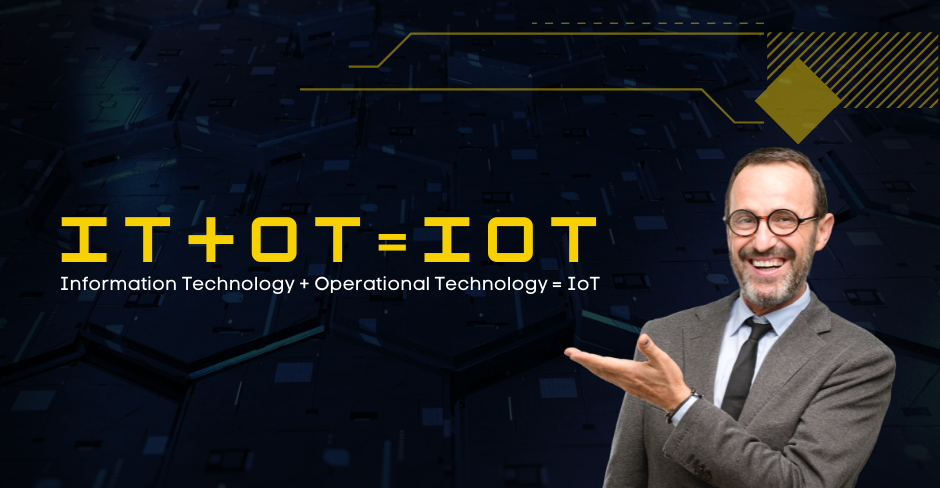As an IT company, Oracle might have a lot of credibility with over 400,000 customers. However, when working with customers on Internet of Things (IoT) engagements in Industrial Automation (IA), it’s very typical for them to wonder why I’m there, says Dave Hofert. While we do have products such as Java that run on devices, a lot of our value-add comes from bringing our nearly 40 years of IT expertise to the IoT space. Many of the challenges IoT faces such as security, identity, and managed device lifecycle are challenges that both Oracle and the wider IT sector have spent decades trying to resolve. IT+OT=IoT
What IoT is – and what it is not
IoT is, at the core, a data-driven business operations process that seeks to better understand business operations or business customers. IoT is not a closed, static or finite process and, in many ways, IoT solutions are never complete. Data is gathered, analysis is performed, and insights are gained about how processes or equipment should be tuned or adjusted. Then new data is collected to observe how those adjustments worked – and then repeated again. This iterative process is never completed because the equipment and processes involved are not static. The key point here is that new skills are needed to manage this process. Team members will be needed who are skilled both in data analysis and in identifying what data actually matters to your processes and your wider business.
Obvious and not so obvious reasons why IoT is a good idea
The obvious reasons for IoT in IA are to improve plant efficiencies and reduce costs. These efficiencies come from collecting better data from processes and machinery to optimise maintenance cycles, improve equipment utilisation, and minimise downtime from failures or accidents. Collecting data isn’t new. What has changed is that we can now collect more – and better – data across the plant, combining it with other environmental data to develop new operational insights. While IoT should be driven by business/ operational needs, adopters initially often collect a lot of data and then wonder what they should do with it.
Beyond IoT, there are other interesting possibilities to consider such as sharing data with suppliers upstream and customers downstream. With the right IoT techniques, any company can safely share data with their partners to improve overall quality and efficiency. In fact, sharing data openly can lead to interesting new extensions to your current business as ‘things’ become services.
Products can transform into services
Many traditional IT functions have been transformed into services which are delivered via web-based requests. These services use standard interfaces (web protocols/formats) to access deeply embedded ERP or CRM data. This transformation has opened up access to business data for partners and internal staff and dramatically improved efficiency.
Manufactured products are now becoming services. One manufacturer I met recently makes standard vehicle parts. These parts are bought, consumed, and replaced every day. Via an IoT model, they can now sell this product by the mile instead of by the unit! They capture operational data via embedded sensors, enabling them to monitor product usage, maintenance, and the need for replacement. The data is captured locally by a gateway that wirelessly sends the data on to the manufacturer.
Why sell by the mile? The company optimises the product life for their customer by offering the monitoring service. The company also collects performance data on the product across vehicle types and customers to evaluate product design. Ensuring proper maintenance helps support the brand value for quality. Thus, what was a very commonplace, everyday product has been transformed into a service, bringing significant, incremental value to both the producer and the consumer.
The success equation: IoT = OT + IT
“IoT” is well named because it represents the merger of “IT” or Information Technology and “OT” or Operational Technology. While these technology spaces usually exist on different sides of a company, IoT solutions must combine them if they’re to work successfully.
The OT world is well acquainted with data collection in the physical world having done this for decades. While data collection has increased, one ongoing challenge has always been interfacing with so many custom or semicustomised solutions. Individually they might be fine, but they’re hard to scale and maintain. And, in addition, IoT solutions require connectivity and, of course security.
By contrast, IT works in a well-defined physical environment – the data centre. IT has evolved into a scalable and flexible resource supporting diverse internal business systems. But IT systems have not yet seen the diversity and scale of nodes that will provide inputs in an IoT model. It’s one thing to have hundreds of servers and thousands of desktops, but hundreds of thousands of sensors and gateways will create a new challenge.
The ultimate recipe for success is for OT to leverage IT standards and management capabilities while continuing to deploy components in operational environments. IT meanwhile needs to provision, secure, and maintain an order of magnitude more devices found in the factory, or elsewhere. For example, Oracle has a large trucking company customer who went through this process 1. They recognised the value of collecting operational and tracking data from their fleet of 11,000 trucks and 44,000 trailers, but discovered that their IT infrastructure couldn’t support this level of data exchange. Restructuring IT allowed them to capitalise on this investment and enable their operational systems to collect data and take guidance. While trucking is different than IA – the same principles apply.

The benefits of platforms and standards
Embedded devices usually have hard constraints such as size, memory, cost, etc. and perform narrowly defined sets of functions. In the IT space, the focus instead is on systems that are both networked and expected to run a wide range of tasks on many different kinds of data. There is also a complementary strong focus on security and availability. Over time, standard practices emerged for data and software management, and were codified into formal standards and platform products.
IoT’s need for flexibility, connectivity, various data types, and enhanced security means that IT platform models have value for OT. Using a platform model means that unified development teams can decide where best to process data and decisions anywhere from the machine to the server. For example, a Java-based intelligent gateway can execute the same exact analytic code on the factory floor as that running on a remote IT server. This edge-based model helps respond to situations sooner, and also helps compress the vast amounts of raw data from many sensors into information that is more compact and transmitted more easily. These gateways can also drive better HMI displays to offer plant operators a clearer view of process operations within the context of the overall factory. And best of all, development teams from IT and OT can speak one common language using one consistent environment. Agile processes will need this level of integration to move as quickly as the markets that we’re all now serving.
Closing thoughts
Even at this early stage, it’s transparently clear that businesses using IoT models can deliver more value to their customers. The good news is that many Industrial Automation companies already have their own secret weapon sitting in their IT departments – development and deployment standards and models that can be applied to the factory floor.










